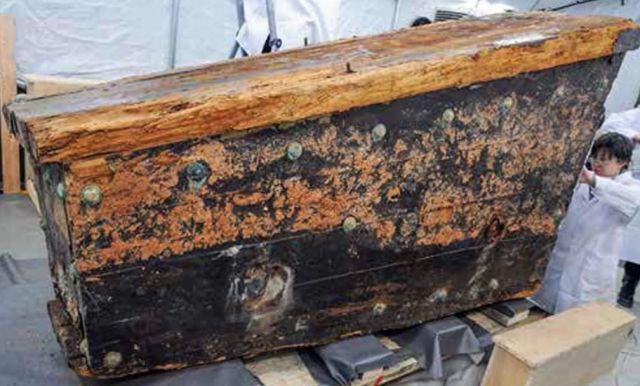Archaeologists opened a black lacquer coffin on Saturday while unearthing a 1,500-year-old tomb in a pasture region of north China’s Inner Mongolia Autonomous Region.
Archaeological work is still under way. Experts so far have only been able to identify the tomb’s owner as an aristocratic woman of the Northern Wei Dynasty (386-534/535).
Archaeologists carefully opened the pinewood coffin on Saturday and found the remains of a person wrapped in silk clothing. She had thick black hair with a metal headband and wore fur boots.
It is not yet known which ethnic group the woman was from. Archaeologists found a bow, a dagger, pottery jars and bowls in the tomb.
Zhuang Yongxing, deputy head of the cultural bureau in Xilin Gol City, said that archaeologists performed a rescue excavation of the tomb after tomb raiders were caught digging a 10-meter-deep hole toward the tomb entrance.

Wang Dafang, relic official from Inner Mongolia Autonomous Regional Cultural Bureau, said the well-preserved tomb will help the study of funeral customs of Xianbei ethnic groups, nomadic minorities that used to dominate the northern prairie.
The coffin was covered with silk curtains hanging from a bronze dragon head in the center of the tomb chamber.
Archaeologists have collected the woman’s hair for technical analysis, which is expected to lead to information such as her age and diet habits.

Two other tombs of the same period have been discovered in the past two years in adjacent areas, which have shown the locality is an important burial site for aristocrats of the Northern Wei period.





